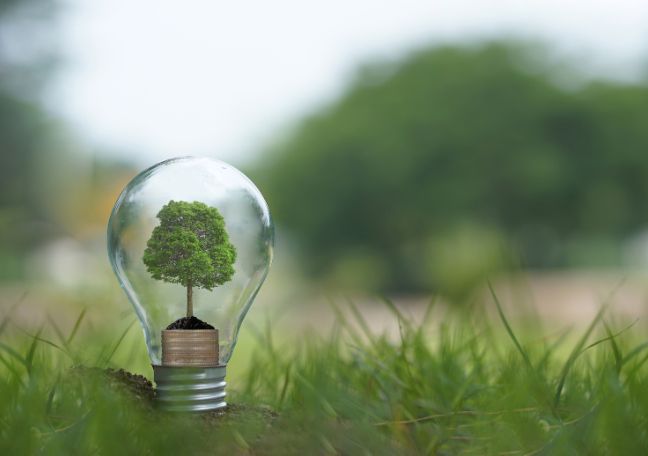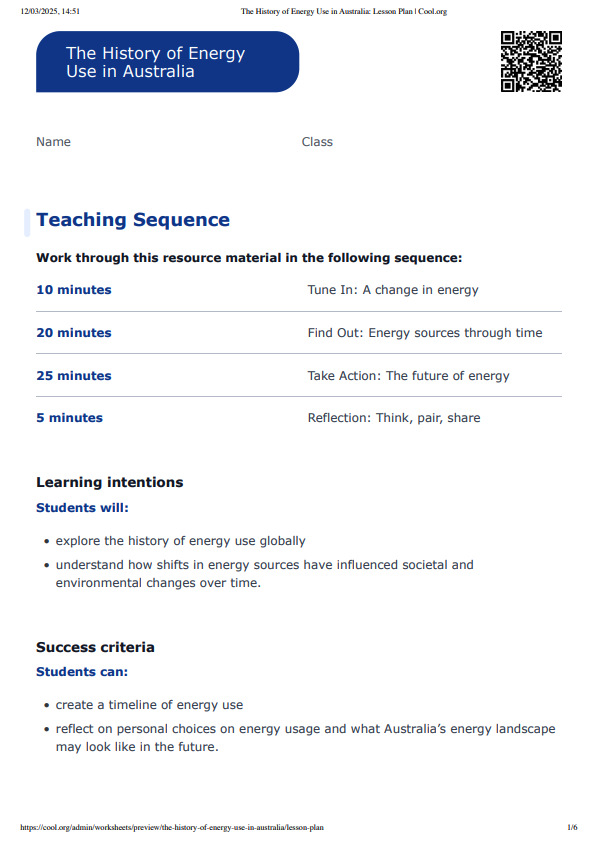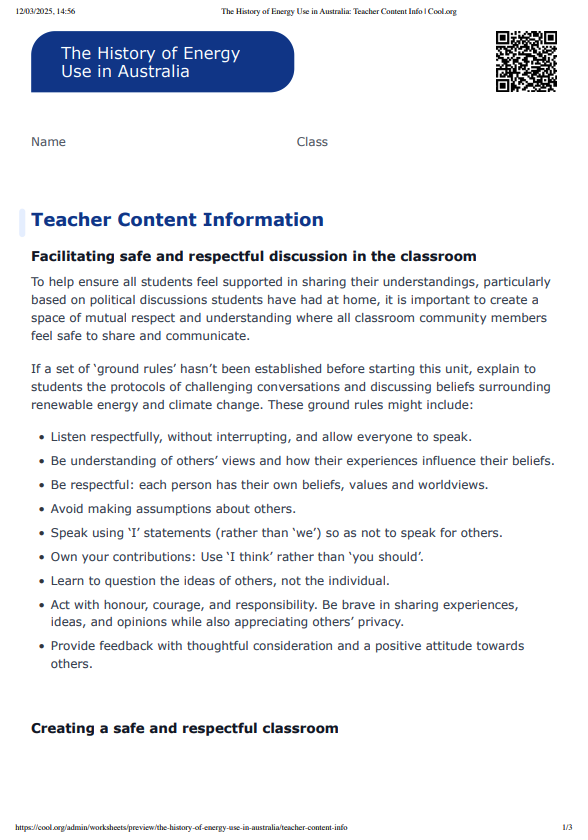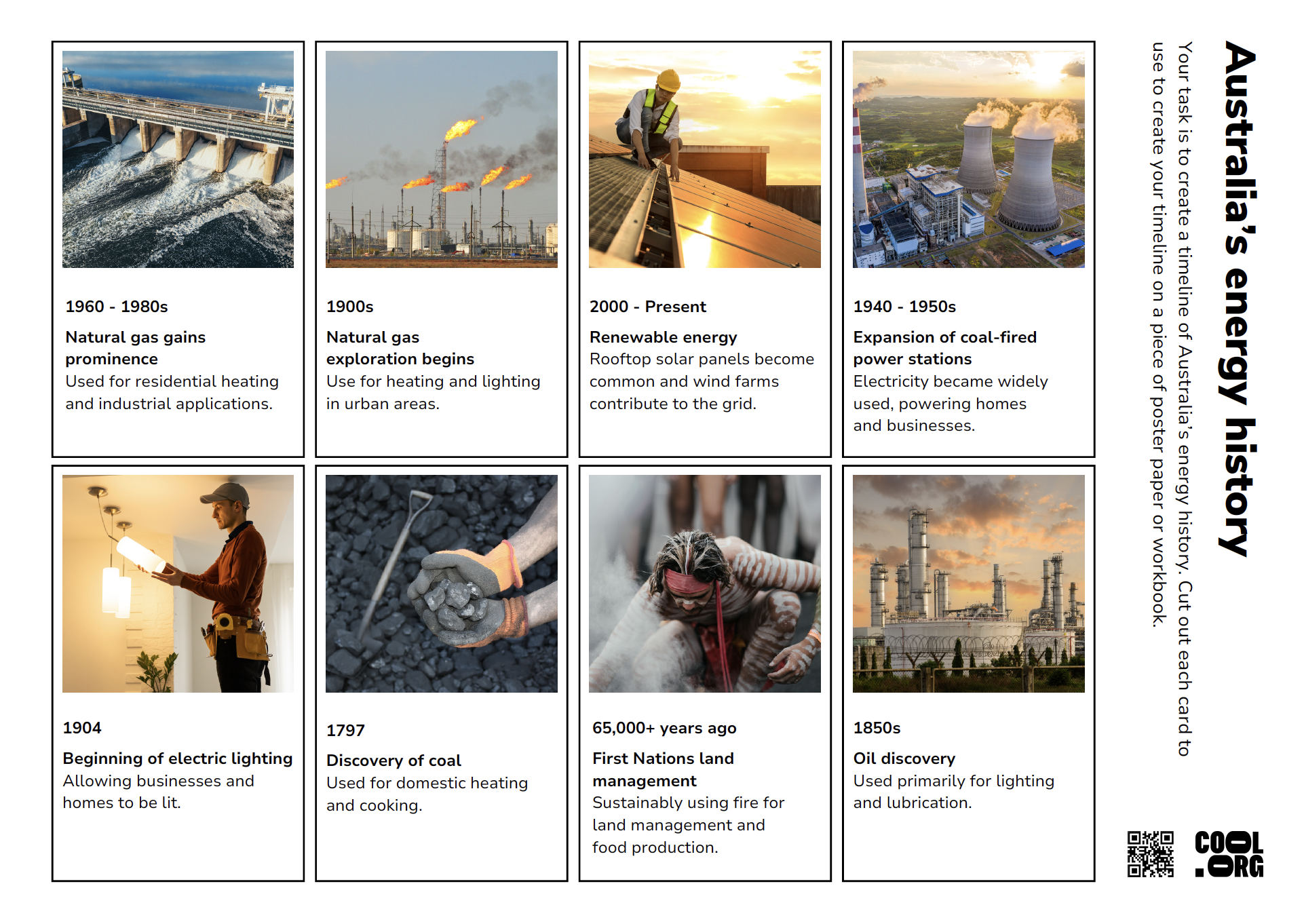Lesson summary
Students will explore the history of energy usage globally by digitally co-creating a timeline, including key events and discoveries, of each energy source discovery. They will develop a deeper understanding of how the shift in energy resource usage has and can impact society and the local environment over time.
Learning intentions:
Students will...
- explore the history of energy use both globally and locally
- understand how shifts in energy sources have influenced societal and environmental changes.
Success criteria:
Students can...
- create a timeline of energy use
- reflect on what Australia’s energy landscape will look like in the future.
Lesson guides and printables
Curriculum links
Select your curriculum from the options below.
Lesson details
Skills
This lesson is designed to build students’ competencies in the following skills:
- critical thinking
- communication
- curiosity
- enterprise
- global citizenship
- problem-solving
- reflection
Curriculum Mapping
Australian Curriculum (v9.0) content description:
Year 5, HASS
Students learn:
- types of resources, including natural, human and capital, and how they satisfy needs and wants (AC9HS5K08).
Year 6, HASS
Students learn:
- influences on consumer choices and strategies that can be used to help make informed personal consumer and financial choices (AC9HS6K08).
Relevant parts of Year 5 HASS achievement standards: Students explain the nature of resources and how they meet needs and wants.
Relevant parts of Year 6 HASS achievement standards: Students explain influences on consumers and strategies for informed consumer and financial choices.
NSW Syllabus outcomes:
A student:
- examines global citizenship and how people organise, protect and sustainability use the environment, using geographic information (HS3-GEO-01).
General capabilities: Critical and Creative Thinking, Digital Literacy, Literacy, Personal and Social Capability
Cross-curriculum priority: Sustainability
Level of teacher scaffolding: Medium - the teacher will be required to facilitate discussions throughout this lesson.
UN Sustainable Development Goals
- Target 4.7: By 2030, ensure that all learners acquire the knowledge and skills needed to promote sustainable development, including, among others, through education for sustainable development and sustainable lifestyles, human rights, gender equality, promotion of a culture of peace and non-violence, global citizenship and appreciation of cultural diversity and of culture’s contribution to sustainable development.
Resources Required
- Australia's Energy History Activity Sheet
- Device capable of displaying audiovisual material
- Pens
- Poster paper (optional)
- Scissors
- Sticky notes
- Student devices
- Whiteboard
Additional Info
Cool.org thanks our philanthropic funder, Boundless Earth for their generous contributions and collaboration in creating these resources.




Welcome back!
Don't have an account yet?
Log in with:
Create your free Cool.org account.
Many of our resources are free, with an option to upgrade to Cool+ for premium content.
Already have an account?
Sign up with:
By signing up you accept Cool.org's Terms and Conditions(Opens in new tab) and Privacy Policy(Opens in new tab).